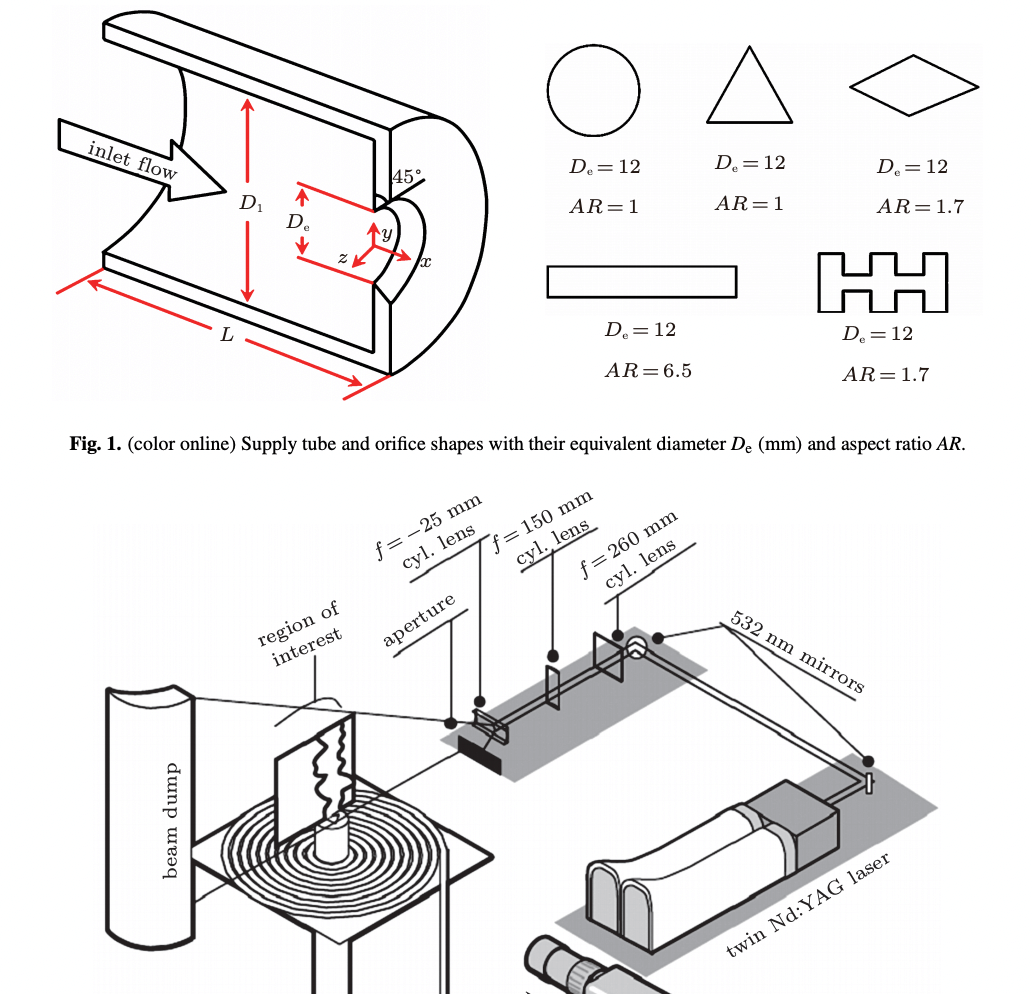Abstract
In this paper, we experimentally investigate the near-field flow characteristics of turbulent free jets respectively issued from circular, triangular, diamond, rectangular, and notched-rectangular orifice plates into air surroundings. All the orifice plates have identical opening areas or equivalent diameters (De) and their aspect ratios (AR) range from 1 to 6.5. Planar particle image velocimetry (PIV) is used to measure the velocity field at the same Reynolds number of Re = 5 × 104, where Re = UeDe/v with Ue being the exit bulk velocity and v the kinematic viscosity of fluid. The mean and turbulent velocity fields of all the five jets are compared in detail. Results show that the noncircular jets can enhance the entrainment rate, reflected by the higher acceleration rates of mean velocity decay and spread, shorten the length of the unmixed core, expedite the increase of turbulent intensity compared with the circular counterpart shortened unmixed core, and increase turbulent intensity comparing to the circular counterpart. Among the five jets, the rectangular jet (AR = 6.5) produces the greatest decay rate of the near-field mean velocity, postpones the position at which the `axis-switching' phenomenon occurs. This supports that axis switching phenomenon strongly depends on jet initial conditions. In addition, the hump in the centerline variation of the turbulence intensity is observed in the rectangular and triangular jets, but not in the circular jet, nor in diamond jet nor in notched-rectangular jet.

